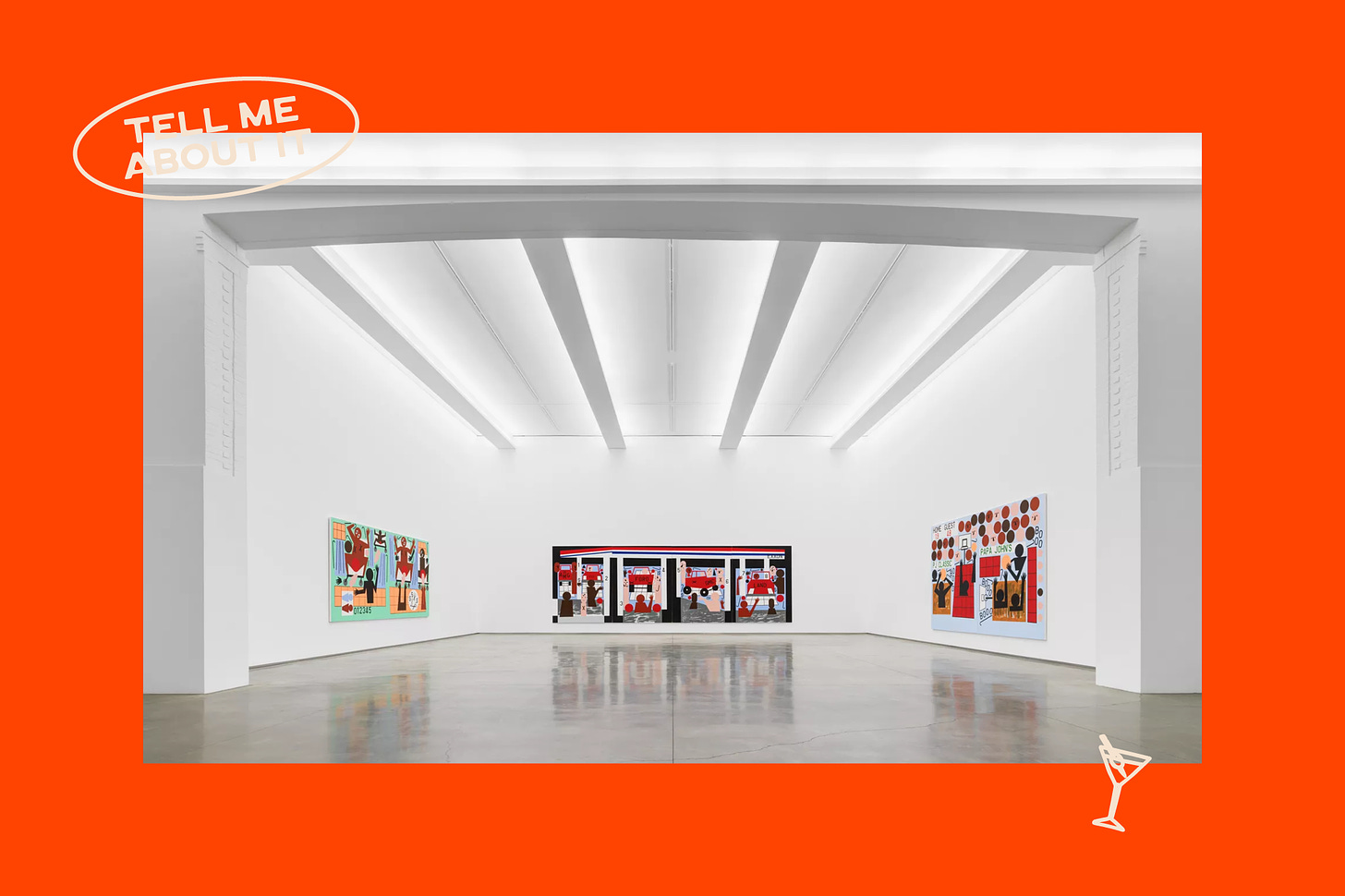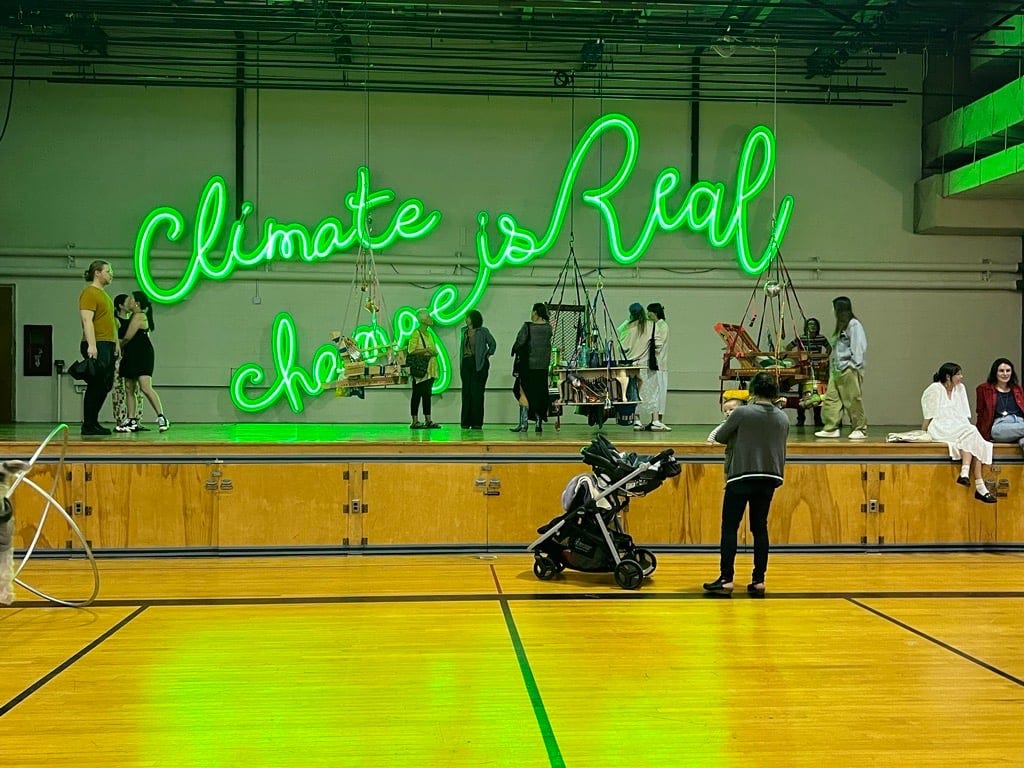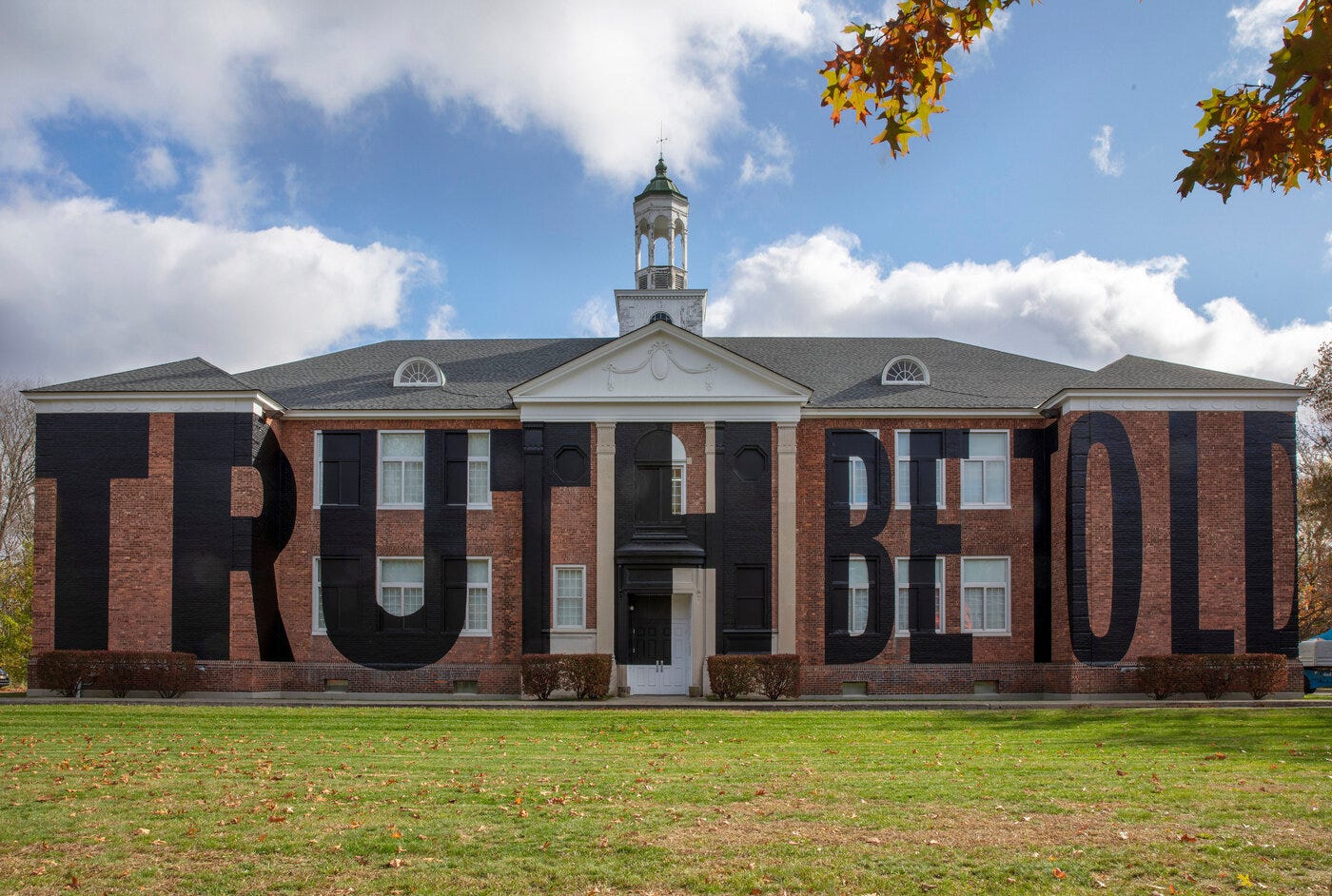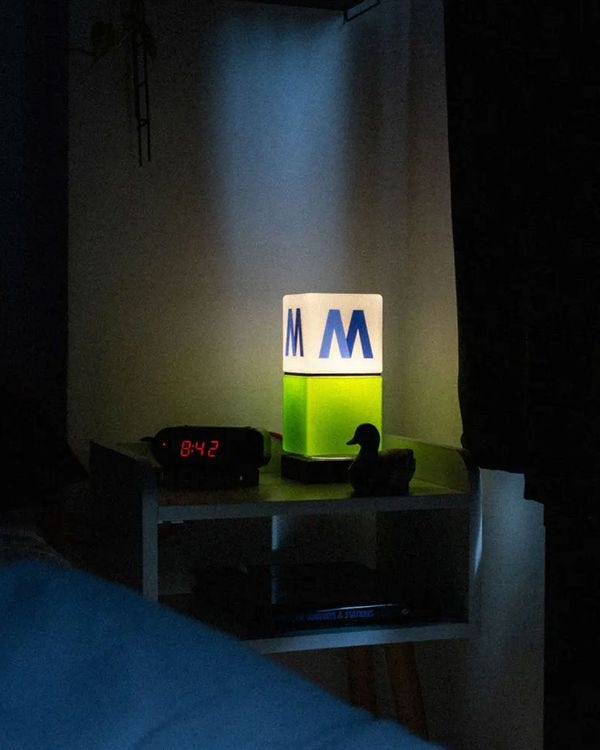This is Cocktail Charm, a weekly email filled with delicious little things to talk about at parties. In today’s edition: all the art schoolhouses and me, solar-powered board games, and upsettingly charming table goods.
Late last month, an unconventional art space opened up in New York’s Hudson Valley. Its name is The Campus, and it’s situated in a defunct high school.
The museum is a project put together by six New York City gallerists who pooled funds to purchase the emptied-out school for $1.2 million in 2021. The space opened with more than 80 artists on show at the end of June. Jenny Holzer is there with her Truisms on kraft paper, while Cecily Brown collaborates with Jutta Koether on a hazy-dream series named Good Luck Spot. And rather than renovate, the gallerists have made the school itself as another component of the catalogue: sliding chalkboards hug the walls of former classrooms-turned-exhibits, and artworks line the school gym with waxed floors fully intact.
Reading about The Campus, I was (of course!) reminded of MoMA PS1, which was converted in 1976 from an empty Queens public school building to the contemporary gallery-slash-community space it is now. But the idea behind this museum, apparently, comes from farther afield. Here’s Andrew Kreps, one of the gallerists behind the space, in the New York Times:
The inspiration for Kreps was the 2006 Berlin biennial, part of which was held in a decaying school for Jewish girls that had been closed by the Nazis. He said that seeing art in a space that still thrummed with the memory of what it had been was incredible, and that it “left an impact on all of us who saw that exhibition.”
Art museums have been made of grand estates and gritty warehouses, cathedrals and chapels, and more unconventional spaces, too. But I’m drawn to school-to-gallery conversions, which seem to pass on shared values — exploration and experimentation, two ideas that ground both education and the arts — like a torch. The buildings’ names may change, but those core ideas don’t.
There are far more schoolhouse galleries out there, too. A few hours upstate is Jack Shainman Gallery’s The School, a 30,000-square-foot former high school that’s still topped by its signature bell tower. The museum has been at odds with the town that it once belonged to, though: In 2020, the gallery was locked in a months-long legal controversy about an installation — titled Truth Be Told, by artist Nick Cave — that protested the police killing of George Floyd. At the time, authorities argued that the text was not art, but code-violating signage, and local politicians called for it to be stripped away. Ultimately, the museum prevailed. School-galleries can be catalysts not just for exploration, but agitation.
Then there are other conversions that don’t convert school buildings, but school buses. Take, for example, the mobile art gallery currently roving in northern Utah with the work of fourth-graders. “Somebody wants my autograph, like movie stars. I thought like, that is pretty sick, wow,’“ student Mae Linton told the local public radio station. Yeah, pretty sick, Mae!
And in a new favorite of mine, an experimental high school in Grand Rapids, Michigan operates inside a public gallery. The Museum School opened in 2015 and currently serves grades nine through twelve. It debuted alongside other in-situ schools across the district, including one in a zoo. A zoo! Shortly after, the district’s enrollment began growing for the first time in more than two decades — and six schools made it off the state’s list of lowest performers.
14/10! I think we should all be visiting museums of schools and schools in museums. And personally, I kind of love imagining my high school biology lab turned into an exhibition space among the beakers.
Up for discussion
Conversation-starters served up on a platter.
AI wants to lay out your living room. A number of new apps promise to be your AI interior designer at a fraction of the cost. Turns out they’re mostly great at beigeifying your life.
Board games, welcome to the climate movement. Catan, the cult-favorite game I’ll always say yes to playing, released a redesigned version that introduces renewable energies to the board, and I think it’s pretty fabulous.
TikTok is putting a run on these faux-film cameras. It’s not unlike the return of ‘00s point-and-shoots in the last year or two. It turns out my digital camera is now an influencer favorite, and everyone’s clamoring for its newest model — at a serious cost. Anecdotally, I got my Fujifilm X100F (retail: $1300ish) on eBay for $700 in 2020. But apparently the X100VI, which retails for $1600, is now reselling for $2500. Supply grimaces at demand. (I do love this camera, though, and you can still find older models affordably secondhand.)
Team USA gymnastics looks have dropped, and they are good. A trio of styles incorporate curves and swirls meant to evoke the French fleur de lis.
A Milanese art gallery is opening after, oh, a fifty-year delay. The Brera Modern, an offshoot of the massive Pinacoteca di Brera, was planned a half-century ago and will welcome visitors in December. If you’ve ever dealt with Italian bureaucracy, you’ll know that pace is just par for the course.
Oh no, I also like the new MTA table lamp. It pays homage to the subway entrance beacons of the 80s and 90s, reads a little Danish on a nightstand, and is regrettably delightful. I just deleted a bunch of lines about how long it took me to navigate the G shutdown this week, so Kathy Hochul, get your transit funding act together.
Parting thoughts
Please reply with better table lamps I can buy than the charming MTA one.
Clink clink!
Gabriela
Thanks for being a reader of Cocktail Charm! Has this newsletter helped you out at happy hour? Let me know! I’d love to hear it.








